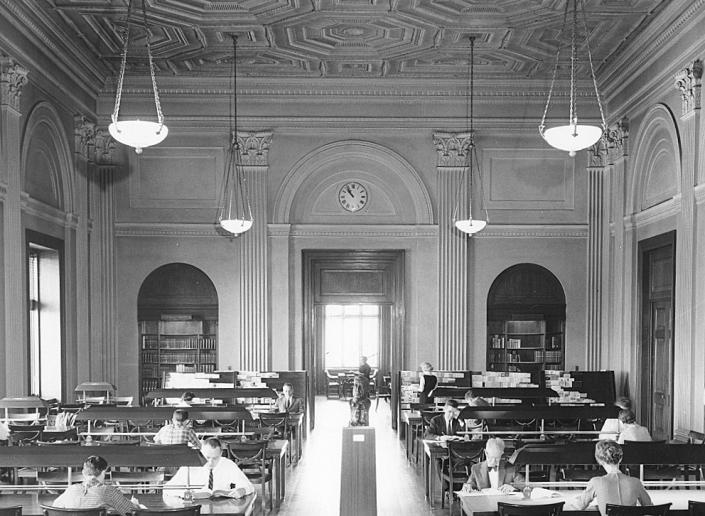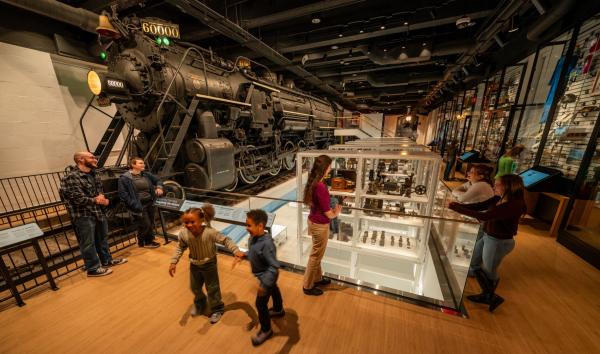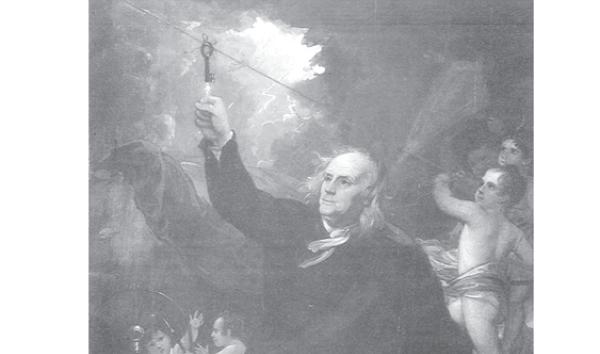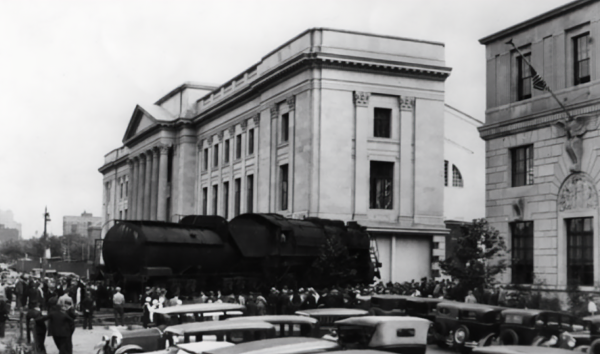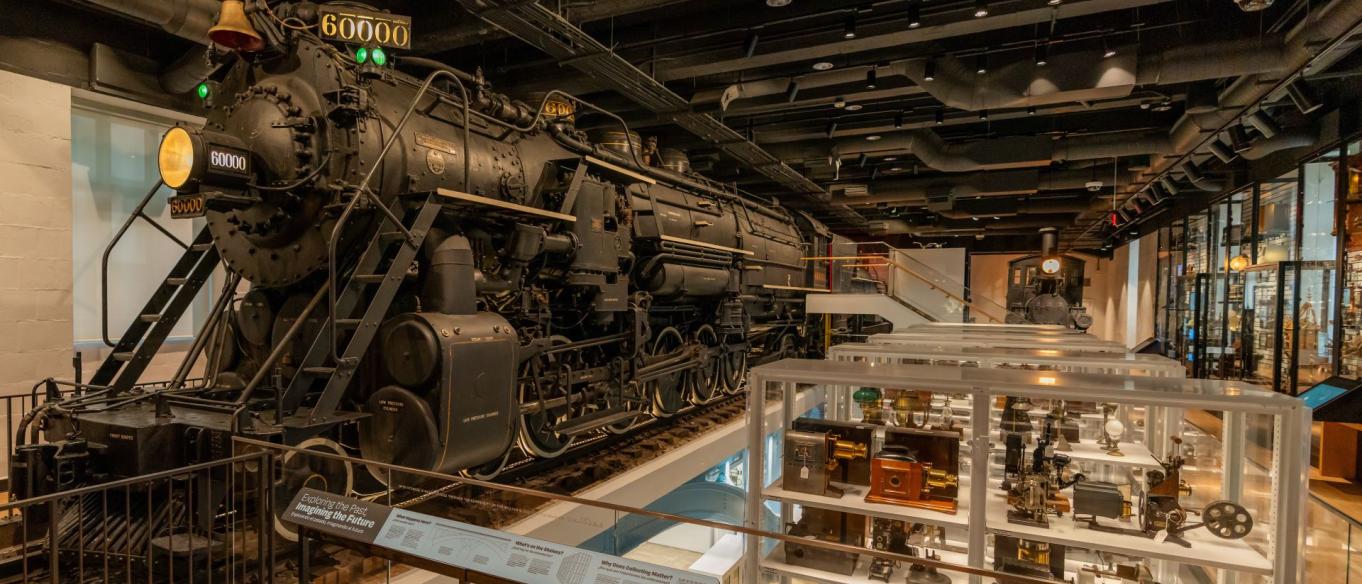
Explore the past. Imagine the future.
The Franklin Institute is home to an extraordinary collection of historical artifacts that chronicle the fascinating journey of scientific discovery and technological innovation. Each item in our collection holds a story, a glimpse into the minds of brilliant thinkers and the breakthroughs that have shaped our world. We are proud to share a selection of these remarkable pieces online, offering a window into the past to inspire curiosity and celebrate the spirit of innovation. Whether you’re a lifelong learner or just beginning your journey into the wonders of science, our collection invites you to discover the inventions that continue to shape our future.
Benjamin Franklin
Benjamin Franklin's Glass Armonica
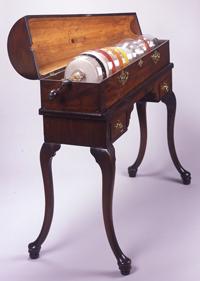
In the mid-1700s, Benjamin Franklin served as a delegate for colonial America and spent a great deal of time traveling to London and Paris. During this period, it was quite popular and entertaining for amateur musicians to perform on sets of "singing" or musical glasses. Franklin attended one of these concerts and was intrigued by the beauty of the sound. Almost immediately, he set to work applying the principles of wet fingers on glass to his own musical creation.
Read More
Benjamin Franklin's Lightning Rod
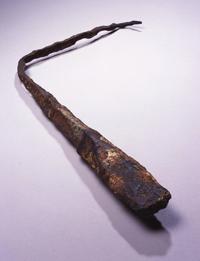
What would you think if you saw a man chasing a thunder and lightning storm on horseback? You would probably wonder what on Earth he was trying to do. Well, if you lived in the 1700s and knew Benjamin Franklin, this is just what you might see during a terrible storm. Ben was fascinated by storms; he loved to study them. If he were alive today, we could probably add "storm-chaser" to his long list of titles.
Read More
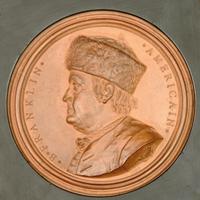
For centuries, medals have been used to commemorate important events and to recognize and reward individual accomplishment and achievement. Serving as visual reminders of great events and people, these not so distant cousins to coins offer exceptional examples of the material culture of ceremony, celebration, and the public recognition of genius and creativity. By the 18th century, France had become the acknowledged leader of this practice of "sculpture in miniature." In fact, many of the dies for early American medals...were actually cast in France.
Read More
Computing
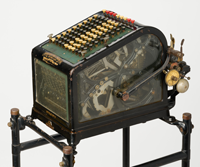
If you wanted to add sixty-three numbers, how would you go about it? How about 1,063 numbers? Before 1888, you did it by mind, hand, and pencil, no matter how many numbers contributed to the sum. That changed with the introduction of the Burroughs Registering Accountant. The machine that "... saves brains and time, and is three times as rapid as the old way" revolutionized the way entire industries and governments dealt with number sets. It made the adding machine a staple of the office for more than a century.
Read More
Hollerith Electric Tabulating System
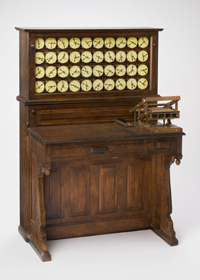
The month of April provokes a variety of thoughts in different people. While some may pleasantly think of its showers giving way to May flowers, many others are faced with more ominous thoughts of a looming tax deadline. As tele-filing and electronic forms become more popular, it is easy to forget about the ways such tasks were managed in the past. Could you imagine collecting data by means of an electric tabulating system? Not exactly sure what that means?
Read More
Electricity
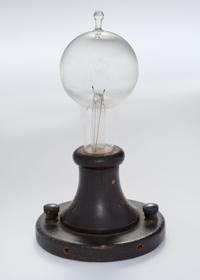
Thomas Alva Edison, born in Ohio on February 11, 1847, was one of the most well-known inventors of all time. He spent a few of his early years in formal schooling, but he received most of his education at home. Thomas set up a laboratory in the basement of his family's Michigan home and spent most of his time experimenting. Edison's mother, Nancy, knew her son was fond of chemistry and electronics, so she gave him books to read on the subjects. One book explained how to perform chemistry experiments at home; Thomas did every one in the book.
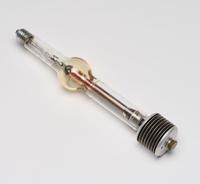
Have you ever broken an arm, leg, or hand and had to wear a cast? Or needed to go to the hospital to see if your hurting ankle was fractured or sprained? If so, we're willing to assume you have come in contact with an x-ray machine.
Read More
Flight
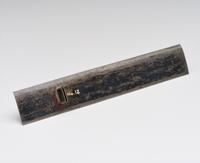
On any day, at any airport, in any city, people fly. Many people experience their "first" flight as a child or young adult. For some people, flying has become routine.
Stop for a moment and consider the wonder. How can an aircraft, loaded with people and cargo, possibly fly?
Read More
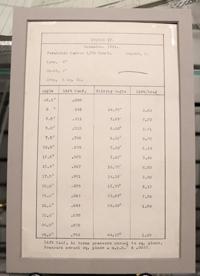
If you could travel back in time to the autumn of 1901, you would find Wilbur and Orville Wright locked inside of their workshop in Dayton, Ohio, gathering scientific data about the forces of flight. For months, they repeated test after test, filling notebooks with their results.
Those notebooks are preserved in The Franklin Institute's collection of artifacts. The collection also includes numerous scraps of paper that they used to chart their data. Most fascinating are the pieces of wallpaper with numbers and vectors scribbled on the backside. Notice the date: September 1901.
Read More
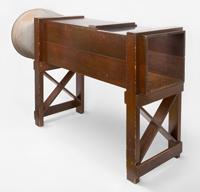
If you like to fly, you owe some thanks to Wilbur and Orville Wright, two hobbyists who became scientists and then achieved first flight. Believe it or not, the Wright brothers credited their success to the investigations that they did in their workshop in Dayton, Ohio, rather than all of their test glides.
Read More
Instrumentation

The nineteenth century was a time of amazing growth in America. Within a relatively short span of time, the country was transformed from a rural society to an industrial giant. Patriotism, ambition, and optimism ran through the land like currents of electricity. The number of patents issued during this time was incredible, and the search for self-sufficiency and greater comfort made inventing a sort of national pastime.
Read More
Maillardet's Automaton
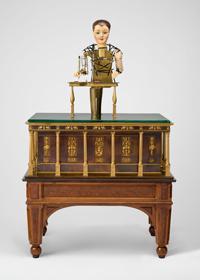
In November of 1928, a truck pulled up to The Franklin Institute science museum in Philadelphia and unloaded the pieces of an interesting, complex, but totally ruined brass machine. Donated by the estate of John Penn Brock, a wealthy Philadelphian, the machine was studied, and the museum began to realize the treasure it had been given.
Read More
Steam-Powered Coin Press
The Franklin Institute's collections include the first "powered" coining press to be used at the United States Mint in Philadelphia. Thonnelier invented the press in France in 1833. It was operated by steam, while earlier presses were operated by hand. Philadelphians Merrick, Agnew, and Tyler imported the press in 1836. When it arrived in Philadelphia, Franklin Peale of the U.S. Mint made improvements to this model. The coining press was first operated on March 22, 1836.
Photography
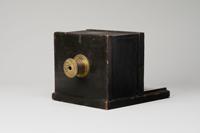
In 1826, Frenchman Joseph-Nicephore Niepce took a picture (heliograph, as he called it) of a barn. The image, the result of an eight-hour exposure, was the world's first photograph. Little more than ten years later, his associate Louis Jacques Mande Daguerre devised a way to permanently reproduce an image, and his picture—a daguerreotype—needed just twenty minutes' exposure. A practical process of photography was born.
Read More
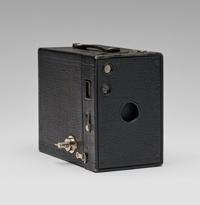
If you asked people in the 1950s, 1970s, or even 1990s what life would be like in the year 2000, a few probably would have had some pretty interesting answers for you. Futuristic clothing, spaceship-like cars, and advanced robotic systems to handle even the most ordinary daily tasks may have been among the responses. But now that we are well into the 21st century, we take a moment to reflect on an object that helped to usher in the beginning of a previous century.
Read More
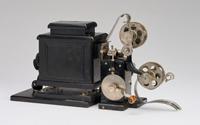
Eadweard Muybridge was born Edward James Muggeridge in Kingston-upon-Thames in 1830. He traveled to the United States in 1852 with the notion of someday changing his name to use the Saxon spelling (he eventually did by 1867). Muybridge worked as a commission merchant for American and English book publishers on the East Coast for a few years before moving to San Francisco. There he worked as a book dealer until 1860, offering finely illustrated American and English works.
Read More
Recreation
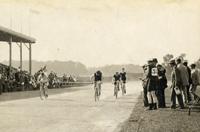
No inventor or country can single-handedly claim to have invented the bicycle; it was invented and reinvented in many places over a period of many years.
Read More
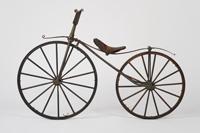
The late 1800s ushered in a huge bicycle boom, and people began to experiment with bicycle shapes and styles to suit the varying needs of the rider. Will this bicycle be used for racing or for recreation? How fast will the rider want to go? How comfortable should the rider be while riding? Is this bicycle safe to ride? These questions and much more led people to develop new technologies that would help evolve the bicycle from the high-wheel models seen in early pictures to some of the high-tech racing machines we have today.
Read More
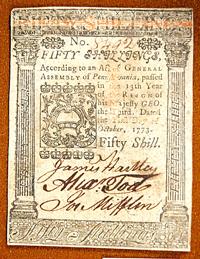
Upon arriving in America, English colonists naturally continued using British currency such as the pound, the shilling, and the pence. But as tensions mounted and they began breaking away from England, colonists found better ways to support the growth and well-being of their new colonies. You may recall having heard a few of these famous sayings about currency:
- "The use of money is all the advantage there is in having it."
- "He that is of the opinion money will do everything may well be suspected of doing everything for money."
Space
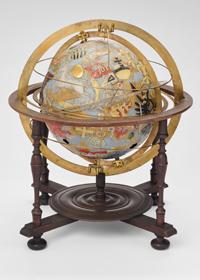
Long before there were planetariums or advanced technologies available for studying the sky, people devised ways of depicting the sun, moon, planets, and stars in relation to the Earth. There was a desire to learn about astronomical history and events; people wanted to figure out how Earth fit into the grand scheme of the universe. Globes helped to put objects into perspective, and served as scientific instruments, ornamental showpieces, and physical illustrations of the astronomy beliefs of the day.
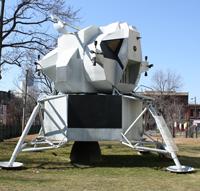
3-2-1...BLASTOFF! For years, those who frequent the Institute's Science Park can imagine they are on a mission to Mars, landing on the Moon, or leaving Earth to travel millions of miles into space. The object that sparks these astronomical imaginings is the Lunar Module, loaned to the Institute by NASA and exhibited outside the museum since 1976.
Read More
Weather
Weather Measurement Instruments
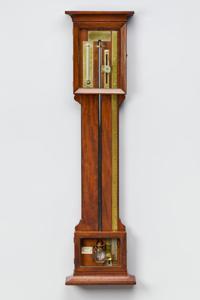
In his lifetime, Ben Franklin made a number of discoveries and tinkered with various inventions. Weather was a topic that continuously fascinated him, and he gave us the famous quote, "Some are weatherwise; some are otherwise." Throughout his life, he studied various aspects of the weather and proposed models to describe the progression of storm systems across North America. Franklin is particularly remembered for his kite-and-key experiments with lightning. Weather and the instruments used to measure it are still an important part of The Franklin Institute and its collections.
Read More
Historical Weather Data for Philadelphia
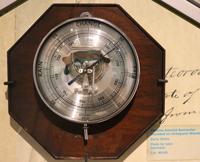
Benjamin Franklin was passionate about the weather and developing techniques for monitoring and forecasting weather. In 1743, Franklin observed that northeast storms begin in the southwest. On horseback, he chased a whirlwind almost a mile to find out why. "Poor Richard," aka Ben Franklin under a pseudonym, printed some of the first recorded weather forecasts.
Read More
Explore TFI’s Digital Library for resources and books on science, technology and more!
This photo by Jules Schick (FI Cat.# PR 134_crop) depicts the Library previously located in Pepper Hall.
Explore More
Hamilton Collections Gallery
Surrounding the Baldwin 60000, guests will discover a treasure trove of rare artifacts meticulously curated from The Franklin Institute's collections.
Case Files
As the documentary record of The Franklin Institute Awards program, the Case Files are filled with stories of scientific enterprise dating back to 1824, when the Institute was founded to train artisans and mechanics in the fundamentals of science.
Scientific Journals
As the second oldest continuously published peer-reviewed journal in the U.S., the Journal of The Franklin Institute has been connected to The Franklin Institute since 1826.
Mission & History
In the spirit of inquiry and discovery embodied by Benjamin Franklin, the mission of The Franklin Institute is to inspire a passion for learning about science and technology.


